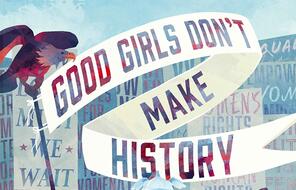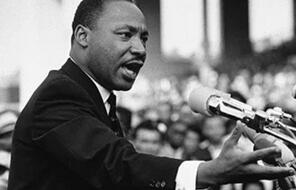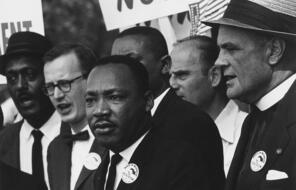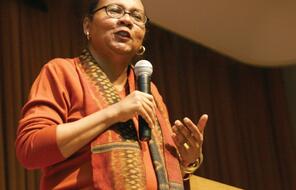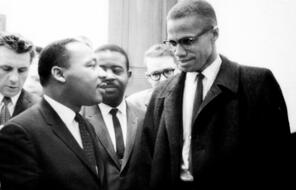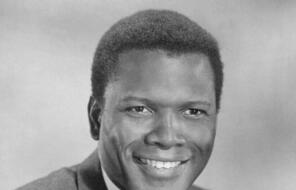
10 Virtual Exhibitions on Women's History
Here at Facing History, we see awareness months as opportunities to deepen our knowledge of and attention to the histories and contemporary experiences of historically marginalized communities. However, the focus on celebrating these communities over one particular month can further marginalize the very experiences we are hoping to elevate. With this in mind, what follows is an invitation to engage with important themes raised by Women’s History Month this March and throughout all of the months of the year.
Women’s History Month each year is a fabulous time for teachers to recommit to integrating the experiences of women and girls into instruction on history and contemporary society all year.
Check out the following sources from Facing History’s peers in the education space designed to help educators meet the challenges and opportunities of teaching about women’s history. Included below are 10 virtual exhibitions that teachers can use to introduce students to women's history:
National Women’s History Museum
The mission of the National Women’s History Museum is to “educate, inspire, empower, shape the future, and provide a complete view of American history.” To this end, the Museum offers an array of online exhibitions and digital classroom resources related to the women’s rights movement in the U.S., African American women’s roles in the Civil Rights Movement, women’s suffrage, and women’s political leadership. Their online exhibitions include:
- Pathways to Equality: The U.S. Women’s Rights Movement Emerges
- Timeline: Women’s Suffrage
- Standing Up for Change: African American Women and the Civil Rights Movement
- Timeline: Women in the Civil Rights Movement
- Legislating History: 100 Years of Women in Congress
The Smithsonian
Girlhood (It’s Complicated)
The Smithsonian writes: “Girlhood (It’s complicated) commemorates the anniversary of woman suffrage by exploring the concept of girlhood in the United States, but also how girls changed history in five areas: politics, education, work, health, and fashion.” NMAH argues that “girlhood has an unexpected and complicated history and that girls, like suffragists, used their voices to make a difference.”
Creating Icons: How We Remember Woman Suffrage
The Smithsonian writes: “Spanning the early days of the woman suffrage movement through to the present-day fights for women’s rights, Creating Icons: How We Remember Woman Suffrage shares stories of the fight to get women the vote. Some of the activists highlighted here were upheld in the history of the movement; others were excluded. Together their stories reveal a history that goes beyond who can cast a ballot to examine the impact of who we uplift as icons and how we remember as a nation.”
All Work and No Pay: A History of Women's Invisible Labor
The Smithsonian writes: “Explore the history of women’s work in the home and the value and implications of unwaged labor. Despite making steps forward in the paid labor force, there is an implied and historical expectation that women will take care of the housework and unpaid work at home. Costumes meant for domestic work from colonial America to the 1990s and objects from various ethnic communities and classes highlight how women shared similar tasks across race and class despite the complicated dynamics and inequalities between them.”
Hearts of Our People: Native Women Artists
The Smithsonian writes that “this is the first major thematic exhibition to explore the artistic achievements of Native women. Its presentation at SAAM’s Renwick Gallery includes about 80 artworks dating from ancient times to the present and ranging from sculpture, time-based media, photography, textiles, and decorative arts… A group of exceptional Native women artists, curators, and Native Art historians have come together to generate new interpretations and scholarship of this art and their makers, offering multiple points of view and perspectives to enhance and deepen understanding.”
One Life: Dolores Huerta
The Smithsonian writes: “One Life: Dolores Huerta highlights the significant role of this Latina leader in the California farm workers movement of the 1960s and 70s. This eleventh installment in the “One Life” series is the first devoted to a Latina. It illuminates Huerta as the co-founder, with Cesar Chavez, of the United Farm Workers (UFW), and highlights her position as the union’s lobbyist and contract negotiator. Huerta was instrumental in achieving major legal protections and a better standard of living for farm workers, yet she remains largely under-acknowledged in history. The exhibition is the first in a national museum to draw attention to her contributions. The exhibition opening coincides with the 50th anniversary of the September 1965 grape strike launched by the farm workers movement.”
Don't miss out!
- download classroom materials
- view on-demand professional learning
- and more...


